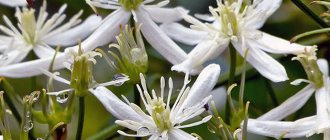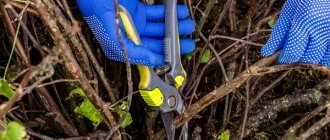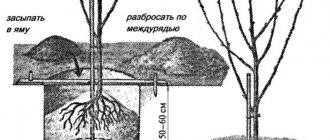Growing grapes in the Urals
The Urals are located in temperate and subarctic climate zones. When in winter in the south it is –16 °C, then in the polar zone it is –24 °C. Summer is short, and it is very difficult to predict in advance what it will be like.
This region is classified as a group of risky farming zones, in which it is possible to grow crops only if you fulfill the entire range of necessary agrotechnical requirements and properly care for the vineyards. At the same time, the process of growing grapes depends not only on proper planting and care, but also on the selected variety. The variety must meet two basic requirements: be zoned (adapted to the climate of the growing area) and winter-hardy.
Grapes in the southern Urals grow well with proper care
Important! It is necessary to distinguish between concepts such as frost resistance and winter hardiness. Frost resistance is the ability of crops to tolerate short-term frosts. Winter hardiness - the ability to survive in winter at low temperatures.
Landing Features
Beginners should not forget that this fruit crop in the Ural region is finicky, caring for it takes time, so the planting process should be approached thoughtfully and correctly. In conditions of a reduced number of warm days, many prefer to plant grapes in a greenhouse.
Professional winegrowers advise beginners to choose for initial planting several varieties with different characteristics and different taste qualities. Later, when you receive the harvest, you will make a choice which variety you will give preference to. It should be remembered that the full yield of planted seedlings can be obtained only after six to seven years, but depending on the quality of the planted bushes, when the necessary care is provided, you can get up to 8-10 kilograms of berries from one grape bush. Most often, such harvests are produced by bushes growing in a greenhouse.
After making a choice in favor of one or more grape varieties, it is necessary to decide where to plant the seedlings and how to prepare the soil for them so that the plant takes root and after a certain time produces a good harvest. To do this, the location where the plant grows is selected correctly and planting holes are prepared.
How to choose a variety, suitable varieties
Due to the wide variety of varieties, some varieties of the crop are suitable for growing in the Urals. Here are some of them.
In memory of Dombkowska
Harvesting takes place after 90-95 days. Ripening is smooth, even in rainy summers. The fruits have no seeds. The taste is sweet, the peel is thin. The plant can withstand temperature changes down to -30 °C.
In memory of Dombkowska
Aleshenkin
Harvesting takes place after 110-120 days. The variety is very frost-hardy and winter-hardy. Even if the amount of solar energy is insufficient, the fruits ripen smoothly and quickly. The cone-shaped clusters contain berries weighing 100-120 g.
Aleshenkin
In memory of Shatilov
Refers to early varieties. The weight of one bunch can reach 700 g. The plant can withstand severe frosty weather.
In memory of Shatilov
Top best varieties
There are a number of varieties that thrive not only in warm climates, but also in areas where it is cold most of the year. They are also divided into covering and non-covering. Let's start our acquaintance with those who need special care. So, the best grape varieties for the Urals with mandatory covering.
There are a number of varieties that do well where it is cold most of the year.
- First on our list is Crystal. Its resistance to pathogenic fungi and various diseases is more than amazing. It is also resistant to frost, but there is a need to insulate it. As for the yield, everything is stable here; up to 10 kg of berries can be harvested from one bush annually with proper care. The ripening period is approximately 110 days. Therefore, it is considered an early type of grape.
- A hybrid of Russian breeders - Aleshkin variety. Dessert, which is capable of producing from 8 kg of grapes during the ripening period. It withstands diseases that affect most shrubs. Suitable for planting in soil in the central and southern regions of the Urals.
To be more precise, the clusters are quite powerful and branched. One bunch can hold more than 1 kg. This is what most often happens during harvest. The taste of the variety is neutral, but this type is more recommended for the production of wine products, although in fresh form it is not inferior to other varieties.
- As for Cardinal, the berries are especially tasty. It does not favor frost very much, so it is better to grow it in greenhouses and cover it better than others. At the same time, the variety has established itself as a variety that is able to live and bear fruit in such conditions.
- Pink Muscat and Antario are two varieties that were bred specifically for regions where it is quite cool in summer and very cold in winter. The varieties are early, so the harvest can be harvested in 100–110 days. The fruits are usually small in size, but have excellent taste. Hybrids amaze all breeders with their ability to develop in temperature conditions (up to -30 degrees).
There are other types of grapes that are no worse than those indicated in the top, but have excellent taste and the necessary qualities for fruiting in the conditions of the northern and northeastern regions.
Popular uncovered varieties
The most interesting varieties of non-covering crops are those described below.
Amur breakthrough
The variety is very strong and vigorous. The fruits ripen towards the end of summer. The round, large dark purple or dark raspberry berries have a dense skin and a sugary taste. The weight of large bunches can reach 1 kg. The plant can withstand temperatures down to -40 °C. Diseases are practically not scary for him.
Amur breakthrough
Amur triumph
Also refers to vigorous-growing varieties. Ripening occurs at the end of summer. Dark large berries are located on weighty clusters weighing up to 1 kg. Withstands temperatures down to -40 °C. Resistant to diseases. Mature vineyards have larger berries and higher yields.
Amur triumph
Marinovsky
Ripening occurs at the beginning of autumn. The bunches are medium in size. The small, elongated berries have a dark blue color, strong skin and juicy pulp. The juice of the berries is clear, the bushes are vigorous. It is very frost-resistant, can withstand temperatures down to -32 °C, and in case of freezing it quickly recovers. Sometimes it produces a lot of ovaries, as a result of which the berries become smaller and become sour. Good ripening of shoots.
Important! It is weakly resistant to oidium, but this deficiency is easily neutralized thanks to preventive treatments.
Marinovsky
About the features of summer planting
Before starting the main work, the pits should be prepared. You can start doing this in the fall or 15 days before the planned planting actions. Mostly, the pit size is chosen to be 70*70*70 cm, after which it is prepared for further filling with nutrients. For each hole you will need to allocate 4 buckets with humus, 2 with sand, 2 liter jars with wood ash from a fruit tree. The pit is filled equally with all components, filling it about halfway. You can see the necessary nuances in more detail in the video. Consider the following actions, which will have a certain sequence.
Each prepared hole is filled with two buckets of water, after which you need to wait for complete absorption and begin planting
Please note that the location of the root system in chernozem should be at a depth of half a meter, and in sandy soil - at a depth of 60 cm. This is necessary in order to preserve the roots from winter frosts. Each seedling is placed at an angle of 45 degrees
To make the task easier, you can make a small mound where the plant is planted, directing the roots deeper. Next, a ten-centimeter layer of soil is carefully poured. Pull the seedling as carefully as possible in order to place the roots at the proper level and in the desired direction. Water the holes with the next 2 buckets with an inlet and pour out the remaining humus, sand and ash. The location of the lower bud should not be below ground level. After pouring out the last water, cover the soil around the grapes with black film to prevent excessively rapid evaporation. The part located above the ground must be closed in order to protect the fruits from temperature changes and weather changes. You can use a plastic bottle, after wrapping it in white paper.
To improve watering and fertilizing, install a drainage pipe, the diameter of which will not exceed 10 cm. It helps to simplify the implementation of the listed activities. For proper formation of grape bushes, you can use durable trellises with tensioned wire. You can set the direction you need by tying the seedling to the wire.
How to care for grapes in open ground
Grape crops require year-round care, and its intensity depends on the period. The greatest attention should be paid to vineyards in spring and summer.
Caring for grapes in open ground
Spring care
In April-May, Ural grapes need to be freed from shelters. At first, the film shelter needs to be opened for only 1-2 hours; after a certain period of time, the intervals at which the plant is exposed to air increase. The best time for ventilation is cloudy weather or morning.
Important! You should take care of supports for the bushes so that, if necessary, you can throw cover over them.
Summer grape care
Just like in the spring, caring for grapes in the summer in the Urals has its own characteristics. In summer, actively growing shoots need to be tied up. Don't forget about thinning. From June to August, you need to regularly clean the leaf sinuses from the formed stepsons and whiskers.
Grape pruning
Pruning grapevines is necessary to increase yields, as well as to better prepare for winter. Pruning is done throughout the season (breaking out stepsons) and in the fall. Autumn pruning is done after harvesting, with the onset of the first frost.
Many beginning winegrowers ask the question: how to prune grapes in the summer? Summer pruning includes:
- Pruning the ends of vines that have dried out over the winter.
- Removal of weak and sparse ovaries.
- Regular removal of stepsons and weak shoots.
- Chasing (pinching) from mid-July to late August.
- Lightening the crown in September - removing part of the leaves. Leaves that shade ripening clusters, lower ones, as well as old and diseased leaves are removed.
With the help of autumn pruning, fruit vines (sleeves) and replacement shoots are formed. For the Ural region, the most optimal is standard fan pruning into four arms. Four vines are formed on the trunk with a fruiting zone and replacement shoots (knots) at the base.
The first time, the vines and the remaining stepson (if there is one) are cut to a length of 4-6 buds, removing all the stepsons, tendrils, and leaves. The vines are then pinned horizontally above the ground for winter cover.
In the second year, new shoots will develop from the remaining buds. Of these, 4 of the strongest are left (2 on each vine), and the rest are removed. By autumn, young vines will develop from these shoots, which next year will be able to please with the first harvest.
The most productive part of the fruit vine is in the middle. You should remember this when doing short pruning in autumn, and leave 8-10 buds on them. In the spring, at the base of each such vine, it is necessary to leave a strong shoot, which will develop over the summer and become a replacement shoot for the fruit-bearing vine. After 3-4 years of fruiting, the vines are cut out in the fall, leaving a small stump, and replaced with young branches left behind. Thus, 3-4 year old grape vines can grow on developed roots that are two to three decades old.
You can see the procedure for pruning grapes in the fall in the video:
Preparing for winter
Proper preparation of vineyards for cold weather will allow you to preserve the bushes and get a generous harvest in the next season.
Grape pruning
Pruning is carried out only after the leaves have completely flown. It is needed for the formation of bushes.
Grape pruning
Usually this is the month of September, and the weather should be dry. In most cases, all branches of annuals are cut off, leaving 2-3 buds. In two-year-olds with good development, the internal branches are cut into 2 buds, the external ones are not touched. Dry and thin branches are removed from an adult vine, the rest are simply cut off, leaving 2-3 buds.
Sheltering grapes for the winter
The grapes should be covered in November at a stable temperature of -5 °C. It is not recommended to lay the vine on the ground. The shoots are placed on a wooden lattice or dried pine needles. The branches are covered with spruce paws, and multilayer non-woven material and tarpaulin are placed on top.
Small bushes are covered in this way:
- Rings are formed from the vine.
- The rings are placed on a layer of dry pine needles.
- Each plant is covered with a bucket or wooden box.
- The container is covered with spruce branches or covered with straw.
- Slate, film or roofing felt is placed on top.
Is it possible to become a breeder?
There is nothing easier than trying not only to grow grapes, but also to become a tester of new varieties that can develop and produce crops in cold climates. You may not become a famous winegrower, but it is quite possible to develop a new variety for yourself. To do this, you need to understand the technology of grafting. This will require several types of vines. You can prepare them yourself in the fall or purchase them ready-made. Soak in water for several days, preferably 48 hours. Next, you need to choose a grafting method. You can use the root for this, or you can also use the lower shoot, which is closer to the ground. The main thing is that the weather is suitable during grafting, that everything is done correctly, that our cuttings are secured and insulated at the correct angle. Well, northern viticulture is gradually and confidently increasing the number of admirers and those willing to take up such a difficult task. We can only wish good luck to everyone who wants to have tasty and juicy fruits.
Disease and pest control
An important part of plant care is disease prevention. Typically, the first preventive procedure is carried out after spring pruning - copper sulfate can be used as a treatment agent. The next treatment should be carried out during the period of kidney swelling; usually during this period the drug “Actellikom” is used.
Disease and pest control
The plant is treated with Horus for the third time in early May. The fourth treatment is carried out during the flowering period (the drug "Ridomil Gold MC"), the fifth - when the size of the berries is comparable to the size of the peas (the drug "Actellik").
Planting and growing grapes in the Urals requires the gardener to know the intricacies and features of the process. At the same time, it is quite possible to grow a high-quality and rich harvest in this climatic zone.
How to plant
Growing grapes in the Urals in open ground is possible in sunny places, on southwestern and southern slopes. Wind protection must be provided. The vine is planted in the spring, when the soil warms up to +15°C, this is approximately mid-to-late June.
Planting is done as follows:
- Prepare a hole from 60 to 80 cm in depth, the diameter depends on the size of the root, approximately it will be about 45 cm.
- The bottom is covered with drainage material 10-15 cm thick, it can be crushed stone, gravel, expanded clay. Some experienced winegrowers recommend laying drainage from branches at the bottom of the pit instead of stones.
- After this, lay out the turf soil removed when digging the hole, mixed with river sand, compost, and three-year humus.
- Add wood ash in the amount of 200 g, superphosphate - 100 g, lime flour - 200 g.
- Next comes a layer of fertile soil 5 cm thick.
- Then a bucket of water is poured into the hole.
- Allow the prepared hole to stand for some time.
- Before planting, a mound is formed in the hole. If grapes with a closed root system are planted, this point is skipped.
- Place the seedling at an angle of 45°.
- Sprinkle with soil and pour in two buckets of water.
- After the water is absorbed, add a little more soil on top.
- To preserve moisture in the soil and to warm it up better, the tree trunk circle is mulched with straw and covered with black plastic film, which attracts the sun's rays. Thanks to this, the water evaporates more slowly, and the soil under the grapes heats up well.
In spring, the grapes are covered with film. On sunny days, the temperature underneath is about 10°C higher than outside, which has a beneficial effect on the grapes, speeding up their growing season and protecting them from return frosts.
Dark glass bottles with water are dug in around the vineyard, accumulating solar heat, they will give it to the roots of the grapes. What is necessary in the short and cool Ural summer.
When planting several bushes, maintain an average distance of about two meters between them.
Benefits of planting grapes in autumn
- The grapes are in a state of organic dormancy.
- Seedlings are easier to transport .
- The survival rate is significantly higher compared to spring plantings.
- The grape bush does not even “notice” the transplant.
- In autumn, the widest selection of seedlings of any grape varieties is on sale.
Signs of a quality seedling
- Healthy in appearance, with 3 well-developed roots two to three millimeters thick.
- When cut, the color of the roots is white , but not brown or brown.
- The root and vine are not dried .
- Has no obvious mechanical damage.
- There are no signs of disease.
- The shoot has matured well.
- The length of the shoot should be at least 20 cm and about 5 mm thick.
- The shoot is green when cut.











